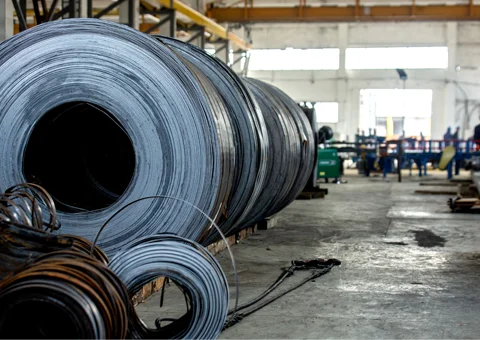LAUNCESTON, Australia, June 18 (Reuters) - It's a case of one step forward, two steps back for China's steel and iron ore sectors, with positive production data being countered by ongoing concerns over the struggling property sector.
China, which produces just over half of the world's steel, saw output reach a 14-month high of 92.86 million metric tons in May, up 8.1% from April and 2.7% higher than May last year, according to official data released on Monday.
The volume exceeded market expectations and was put down to an improvement in domestic demand and strong exports, with steel product shipments rising to 9.63 million tons in May, up 4.5% from April and 15.2% from the same month a year earlier.
For the first five months of the year China produced 438.61 million tons of steel, down 1.4% from the same period last year. However, the pace of the decline in year-on-year steel output has lessened, given that in the first four months of the year production was down 3.0% on the same period in 2023.It's too early to say that China's steel output and demand has turned a corner, especially when the positive picture painted by the May data was immediately countered by weakness in the property and industrial sectors.
Property investment in China slid 10.1% in the first five months of 2024 from the same period in 2023, accelerating from the 9.8% drop in the January-April period, statistics bureau data showed.
Compounding the woes in the property sector, data also showed new home prices falling at the fastest pace in more than 9-1/2 years in May, dropping 0.7% from April and marking the 11th consecutive monthly decline. It's not just the property sector that is struggling, with industrial output rising 5.6% in May, slowing from the 6.7% pace in April and failing to meet expectations for a gain of 6.0% in a Reuters poll of analysts.
The key manufacturing index also declined in May, dropping to 49.5 from 50.4 in April, below the 50-mark separating growth from contraction and missing analysts' forecast of 50.4. STIMULUS BOOST COMING? The weakness in property and manufacturing data comes despite Beijing's efforts to stimulate the sectors and rebuild confidence through measures such as easing mortgage rules. It's likely that these steps will take time to work their way through the system, and if they do bear fruit it will be more of a second half story.
This means that improvements in the steel sector are currently being driven by expectations of an improvement, rather than the reality of strong demand growth. Iron ore, the key steel raw material, is also treading water as the market awaits convincing signs of better times ahead in China, which buys about 75% of global seaborne volumes. Iron ore futures on the Singapore Exchange ended at $106.55 a ton on Monday, down from $107.46 at the previous close, but still above the low from last week of $105.38 on June 11.
Iron ore prices have trended downwards so far in 2024 after hitting a peak of $143.60 on Jan. 3, but even so, they have held above $100 a ton apart from a one-day foray to $98.36 on April 4.
The price has been supported by robust iron ore imports, which are up 7.0% in the first five months of the year to 513.75 million tons. However, much of the gain in iron ore imports has gone into replenishing port stockpiles , which have risen from a seven-year low of 104.9 million tons in October to a 26-month high of 146.6 million in the week to June 14.
The current dynamic of China buying more iron ore than it needs for steel production may have continued in June, with imports set to remain robust. China is on track to import at least 99.87 million tons of iron ore in June, according to data compiled by commodity analysts Kpler.
This figure is expected to rise before the end of the month as more cargoes are assessed as likely to arrive and discharge.

